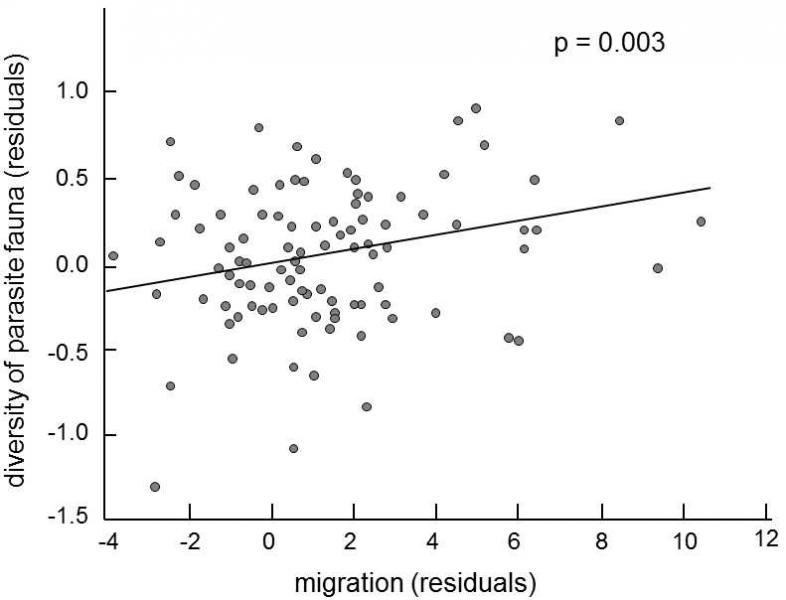XV.5.5.6 In migratory birds, the degree of expression of secondary sexual traits can reflect the quality of the winter habitat
Because of their extraordinary migration ability, birds can take advantage of the difference in climate and day length between areas with different latitudes. At higher latitudes, the day is longer in the summer, so that day birds can be active and search for food longer. In contrast, areas close to the equator are more advantageous for birds in the winter. Consequently a number of bird species are migratory and move over great distances in the north-south direction every year. Simultaneously, the position of the winter habitat and the autumn and spring migration routes change over time and even differ for individual birds within a species. The degree to which these differences are hereditary and degree to which they are learned is not known at the present time; however, this is not important from the viewpoint of our model.
If the degree of expression of secondary sexual traits is positively correlated with the physiological condition of the male (and this is correlated with the quality of the winter habitat and negatively with the demands of the migration route), then it is more advantageous for the female to choose a male with more striking secondary sexual traits (Fitzpatrick 1994). She is thus ensured that the male will lead the family to a good winter habitat or that the offspring will inherit from their father the tendency to visit such a winter habitat.
It would follow from this hypothesis that migratory species of birds should exhibit more marked sexual dimorphism and more striking secondary sexual traits in males than sedentary (resident) birds. Studies comparing various species tend to confirm this assumption (Fig. XV.11); however, it will be

Fig. XV.11 Positive correlation between the diversity of parasite fauna and the migration distance of the particular bird species. The study was performed on ducks, geese and swans and the diversity (number of species) of blood protozoa fauna was monitored. The calculated residuals were plotted in the graph after elimination of the effect of phylogenetic relatedness, the latitude of the nesting area, the extent of the nesting area, the overall area and the intensity of study of the particular species. It is apparent from the graph that the diversity of parasite fauna in the individual species after elimination of the effect of confounding variables is positively correlated with the distance (in geographic degrees) between the place where the species overwinters and the place where it reproduces. According to Figuerola and Green (2000).
better to wait for more results before drawing any conclusions. A correlation could also be explained in a different way. Migratory birds spend part of the year in the tropics or subtropics and the coloration of birds in these areas is generally greater than that of birds of temperate regions. Another hypothesis relates the greater coloration of these birds to their greater average infestation by parasites (Figuerola & Green 2000); the reasons for the positive correlation between infestation by parasites and coloration will be explained in Section XV.5.5.8.
